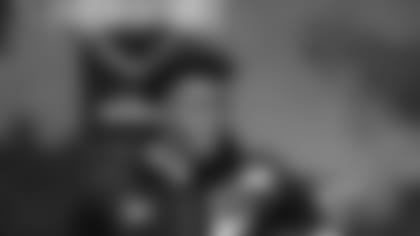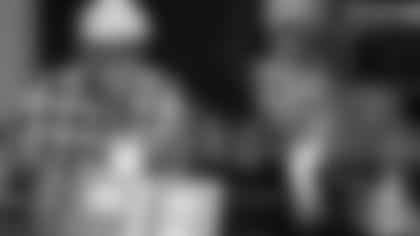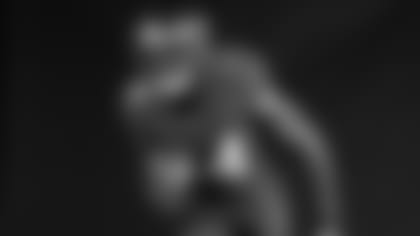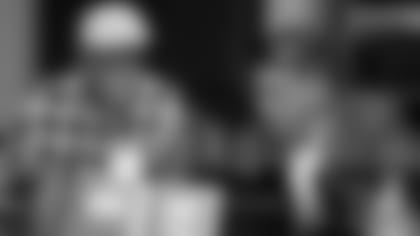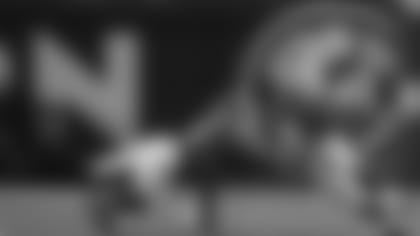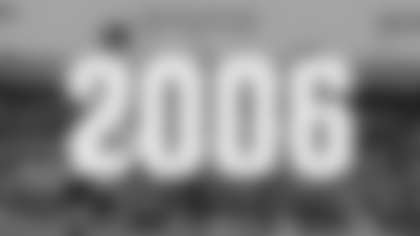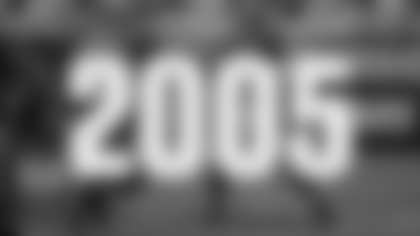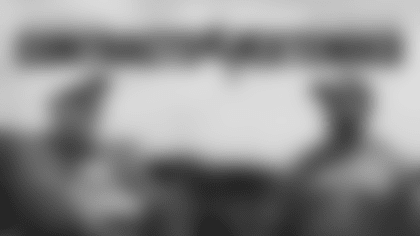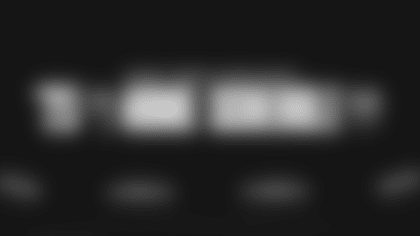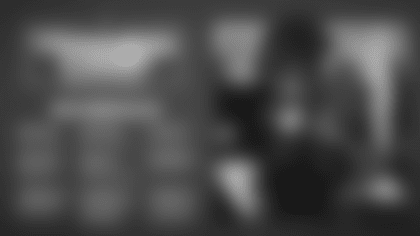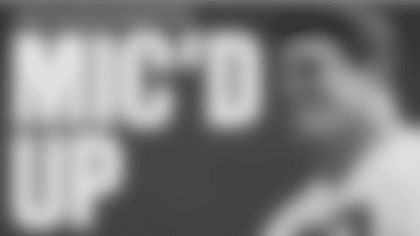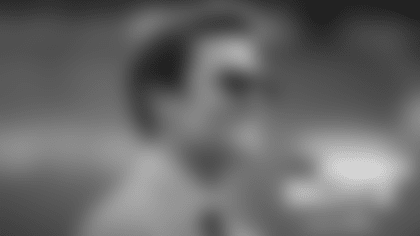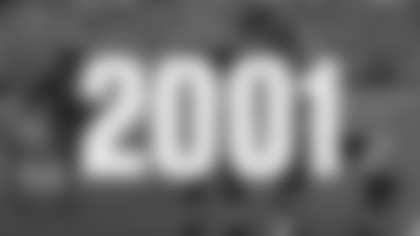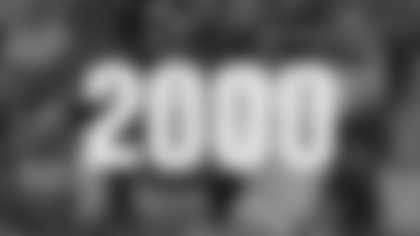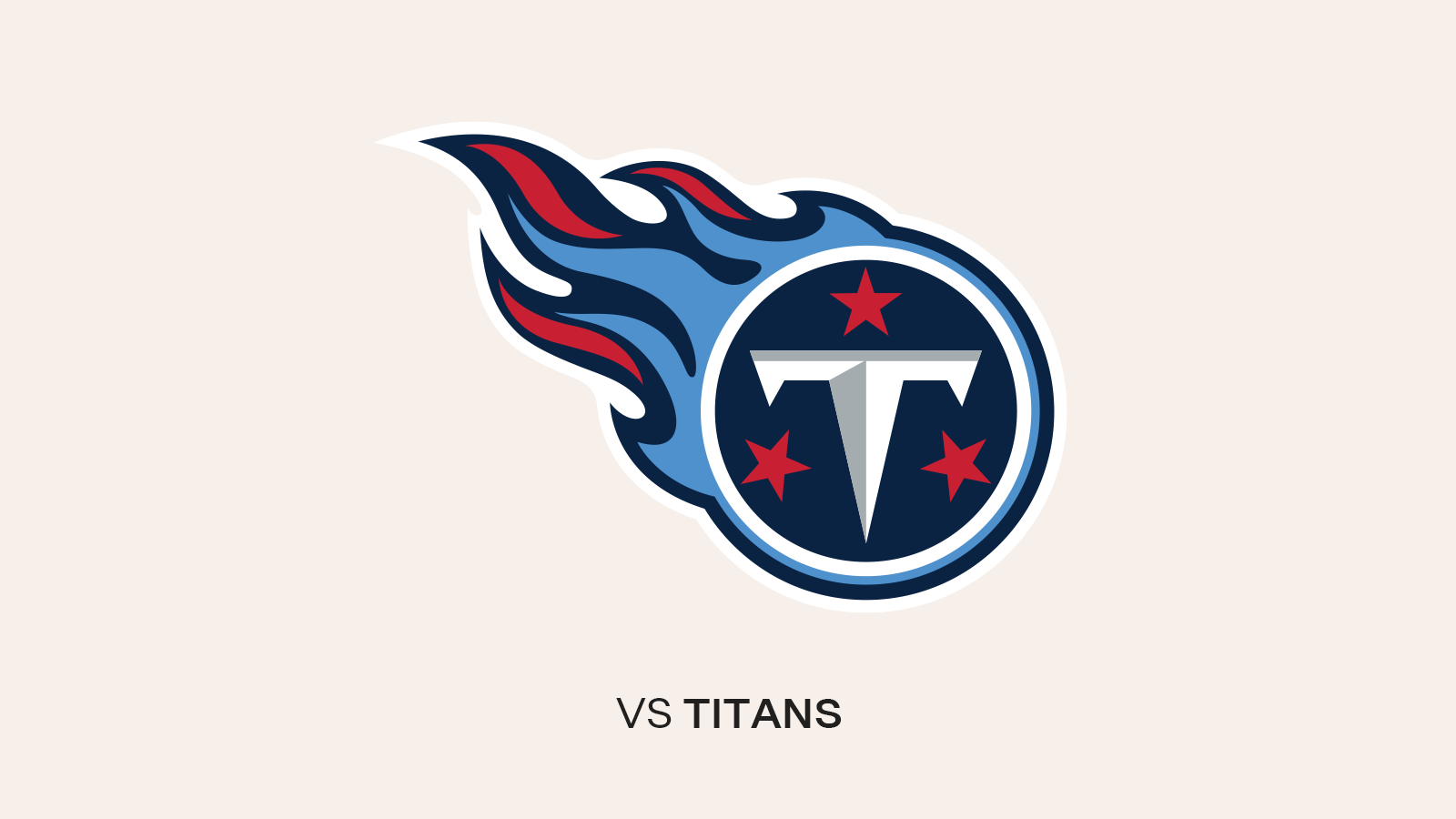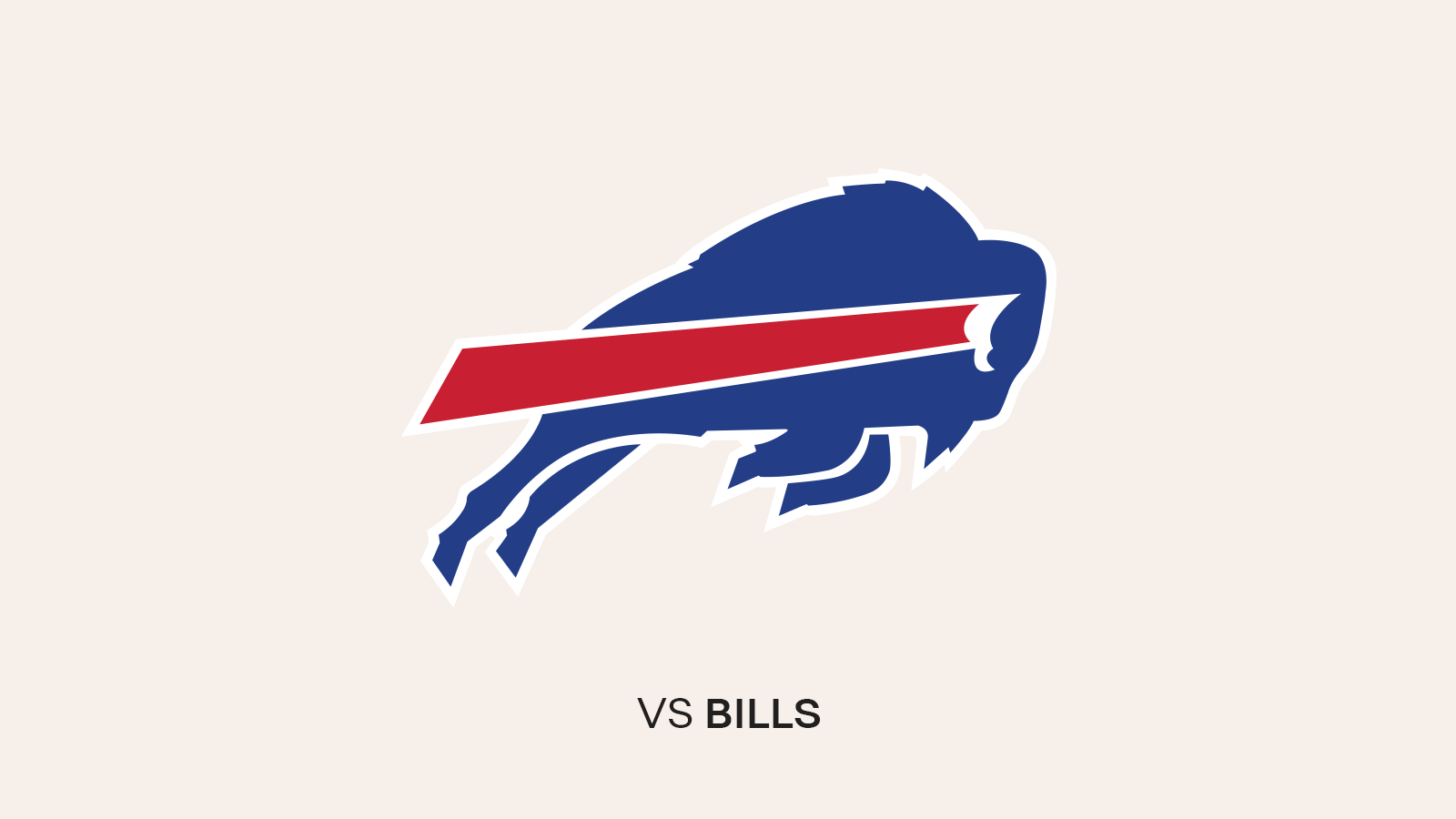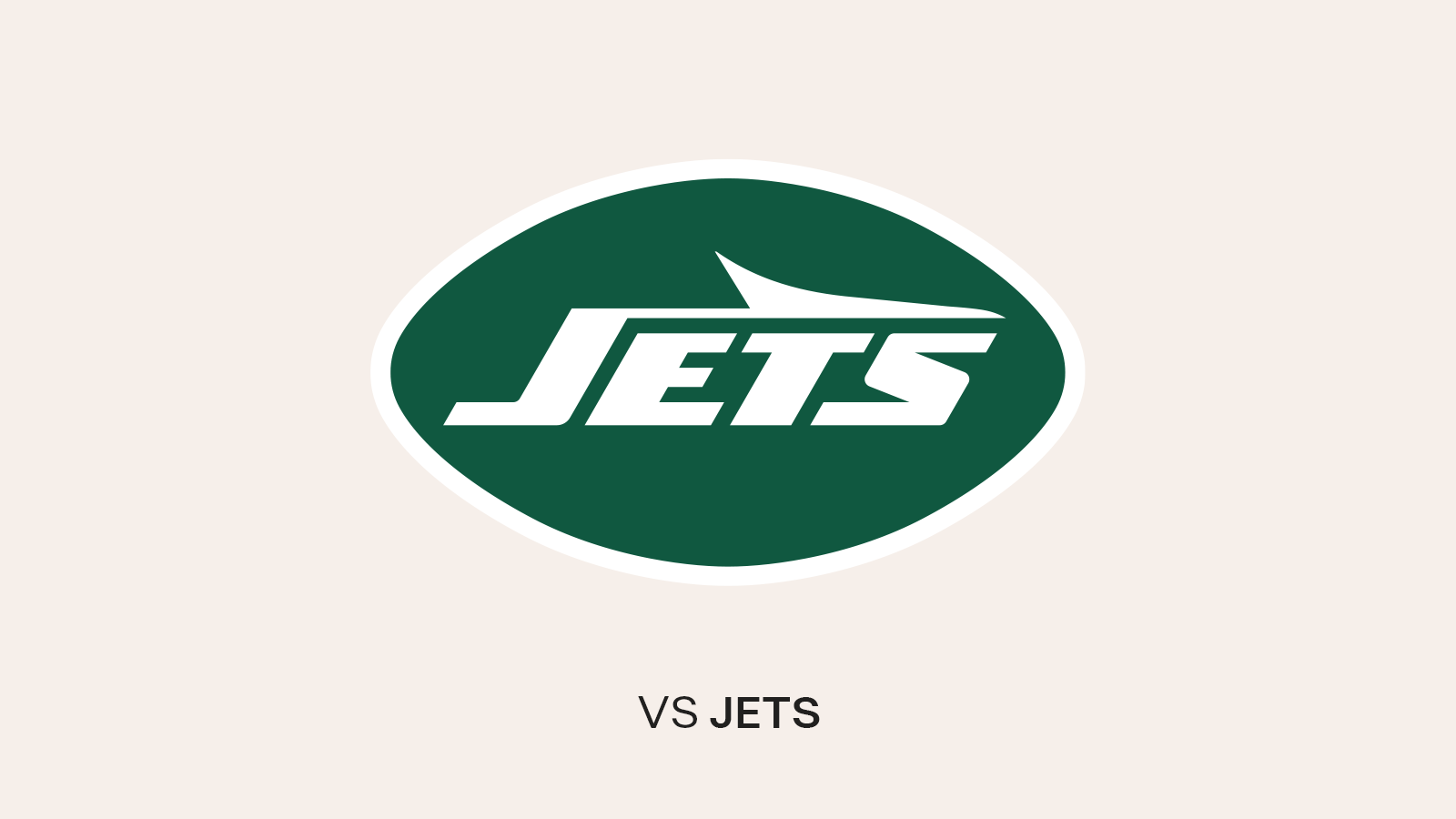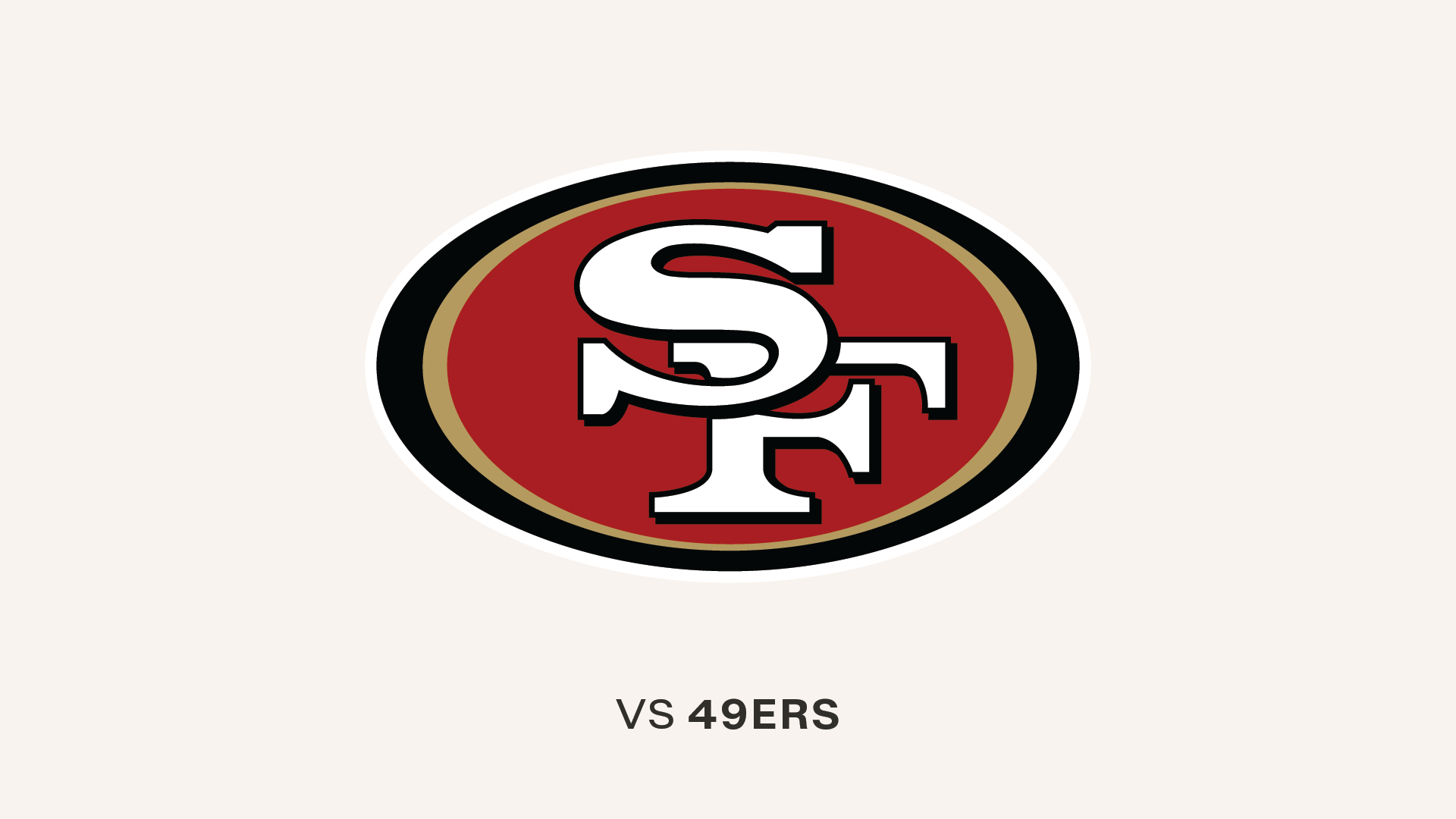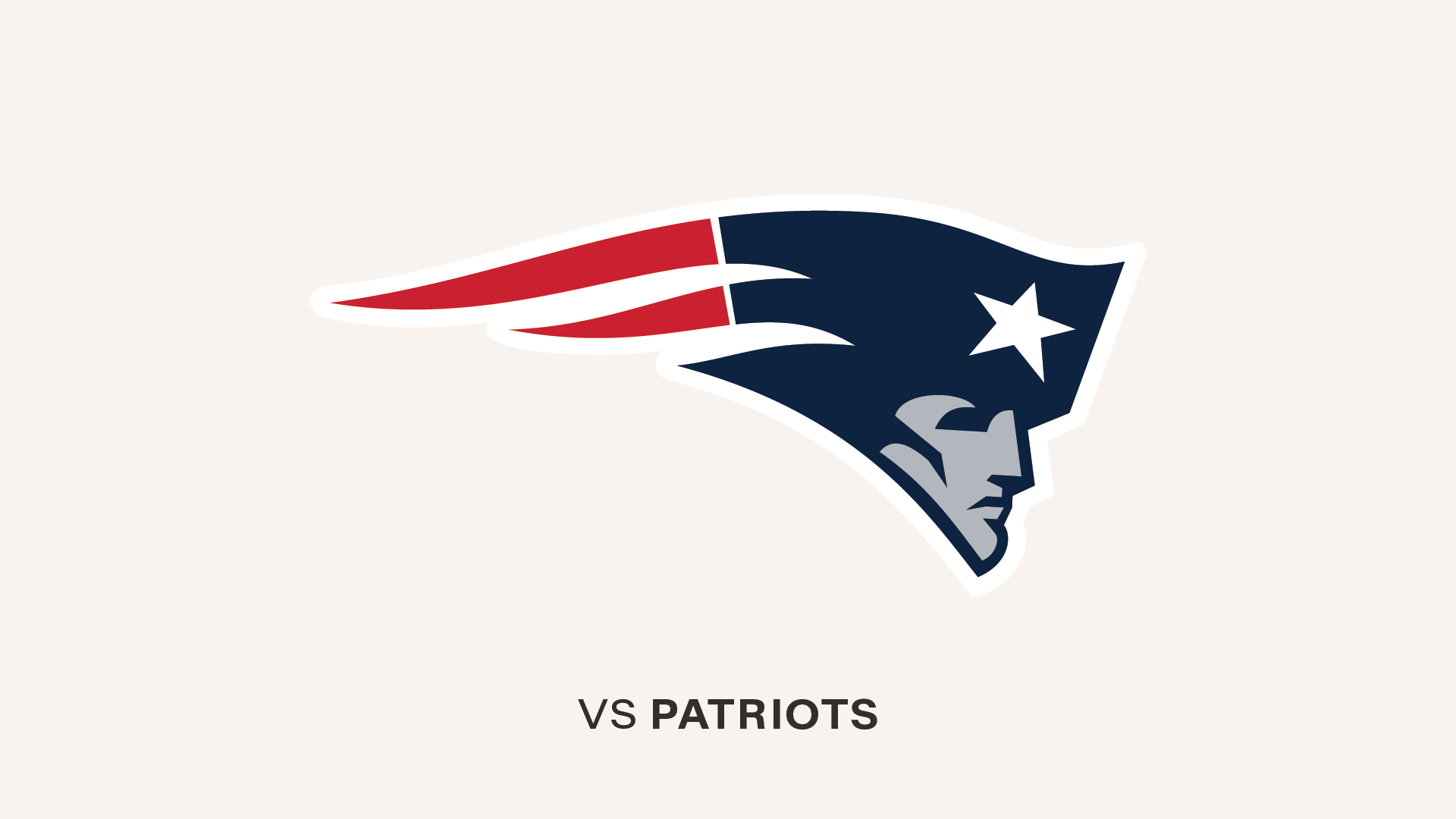When the running back group takes the field for its workout at the NFL Scouting Combine on Friday night, Bruce Arians will be watching their hands more than their feet.
Arians is heading into his second year as the Tampa Bay Buccaneers' head coach, and he may want to do so with a more robust backfield. If his team chooses to use one of its six (soon to be seven, probably) draft picks on a tailback he will want it to be one who can be on the field on any down.
"You can see them all run; I want to see them catch," said Arians of the upcoming running back workout. "In college football they don't do a lot of pass-blocking, so that's always a big step for them. Can they be a receiver? That separates guys from having to come off the field. I had Christian Okoye who led the league but he never played on third down. Edgerrin James never came off the field. Marshall Faulk never came off the field. For me, I'm looking for that type of guy."
Arians was also the Arizona Cardinals' head coach from 2013-17, and the most productive running back he had during that time was David Johnson, a third-round pick out of Northern Iowa in 2015. Though Johnson has struggled with injuries two of the past three years, at his peak he was one of the best examples in the NFL of the running back Arians is describing. In 2016, Johnson ran for 1,239 yards but also caught 80 passes for 879 yards.
At the Combine on Tuesday, Arians spoke about the Bucs' existing backfield stable and had very positive words for Ronald Jones, the third-year back who was the team's starter in the second half of 2019. Arians felt as if Jones took a huge step forward in 2019, going from 77 yards from scrimmage in a lost rookie season to 1,033 last year, and he suggested that the former USC back is still just scratching the surface of his potential.
So, even though Peyton Barber is a pending free agent and the Bucs' running back group otherwise consists only of Dare Ogunbowale and T.J. Logan, Arians may not have running back high on his shopping list in April. If he does want a back, however, he wants a complete one, and most of the prospects in Indianapolis want to prove that's precisely what they are.
The 5-11, 220-pound Jonathan Taylor follows in a long line of powerful Wisconsin running backs who run over tacklers and put up huge numbers. Last year he ran for 2,003 yards but he also increased his receptions total to a career-high 26 for 252 yards. He wants to show coaches at the Combine that he can stay on the field in passing situations.
"One of the biggest things is being effective in third down," said Taylor. "A lot of guys think that Wisconsin is power football and outside zone schemes. Which it is, but Coach [Paul] Chryst did a great job of making an emphasis point to put me in space to be able to showcase that ability."
Taylor said his favorite running back when he was growing up was Houston's Arian Foster, who was a 6-1, 227-pounder with a straight-up running posture. In his best season, 2010, Foster led the NFL with 2,220 yards and 18 touchdowns and rarely came off the field.
"I just think he was so smooth for his size in and out of his cuts," said Taylor. "That's just some guy I tried to model my game after."
Taylor has to contend with preconceived notions about Badger running backs. LSU's Clyde Edwards-Helaire may also be pigeon-holed because he has a tough running style despite being 5-8 and 209 pounds. That has drawn comparisons to Maurice Jones-Drew, and that's obviously a great compliment, but Edwards-Helaire has made a point of studying tape on Marshall Faulk and Kevin Faulk, two NFL backs who were outstanding receivers. Edwards-Helaire caught 55 passes last year and thinks he can separate from the pack by showing off those hands in Indianapolis.
"Most recently, I would say Josh Jacobs," said the LSU back as a point of comparison of what he strives to be in the NFL. "He's a guy that was versatile. He came out and he was able to do everything they were asking him – pass-pro, run between the tackles, being able to catch the ball. That's something I think he prided himself on. [He's] a little bigger than me.
"Me being able to ultimately catch the ball is something that really sets me apart."
* The tight end class for the 2020 draft is not considered particularly strong and this could be the first year since 2016 without one coming off the board in the first round. The Buccaneers certainly seem unlikely to target a tight end early, but they do have a decision to make in April regarding the decision.
As a first-round draft pick in 2017, O.J. Howard received the standard four-year contract with a team option for a fifth year. Teams that want to exercise that option must do so between the player's third and fourth seasons, and that's where Howard is now. This seemed like a foregone conclusion after Howard started his career with two very promising – if a bit unlucky in terms of injury – seasons. However, the former Alabama star took a bit of a step back in 2019 with a career-low average of 32.8 receiving yards per game and a couple of notable drops in the early going.
General Manager Jason Licht said the team's decision-makers have had discussions about Howard's option year and, without revealing the decision, he feels good about the plan. As for the trade rumors that have surrounded Howard since midseason, Licht looked forward to another, more productive year for the tight end in Arians' offense.
"You're going to think I'm being cryptic here, but you listen to everything," said Licht. "But we have plans for O.J. being in our offense this year."
Arians noted that Howard improved as the season progressed, and indeed Howard posted nearly half of his season production from Weeks 13-16.
"People were trying to put him in a class he had never reached yet," said Arians of the Pro Bowl chatter that Howard gave rise to with his play in 2018. "The expectations that sometimes were put on him, he hasn't done that yet. He has that potential. He got better and better as a blocker, which to me is important. He steadily got better catching the ball and holding onto it. So can he be a threat? Every week we look for the best matchups. When you have Chris [Godwin and Mike [Evans], the tight ends might not catch a lot of balls."
* The consensus top three quarterback prospects in this year's draft are LSU's Joe Burrow, Alabama's Tua Tagovailoa and Oregon's Justin Herbert, and it would be no surprise to see all three off the board within the first five to seven picks. After that, the picture becomes much less clear.
Among those commonly lumped into the next tier are Utah State's Jordan Love, Washington's Jacob Eason and Georgia's Jake Fromm. But will any or all of them sneak into the first round? The top half of the round? Or will they become Day Two targets for teams hoping to get a developmental passer?
The Combine and the upcoming Pro Days will help answer some of those questions as the QBs slide up or down the board. For his part, Love knows he needs to show teams that playing him under center won't be a roller coaster ride.
"Definitely the most important thing to me is being more consistent," said Love during his podium time at the Combine. "You watch my film, I've got some plays [where] I'll make an incredible throw and the next thing you know I miss a swing route or a check-down or something like that. So just being more consistent in all my throws, definitely my footwork in the pocket, obviously getting from under center into drop-backs like that – that's something I've been practicing since the season ended."
Love has prototypical size, a cannon of an arm and good athleticism to move around and out of the pocket, and he had the first "win" of the combine when his hands were measured at 10.5 inches. But he followed up a sophomore season that included 32 touchdown passes and just six interceptions with a 20-17 ratio last fall.
"The biggest difference for me was the turnovers, they obviously went up," said Love. "That's me trying to do a little too much out there and force the ball down the field, thinking that I could make throws into tight windows and obviously just being in situations where I could have just checked the ball down but I was trying to make that play."
As Love makes the rounds during the team's one-on-one interview periods, he has frequently been asked to go through a tape of his 17 interceptions and explain what his reads were and what led to the turnovers. He's strived to show NFL coaches that his mistakes are correctable.
"Obviously that's what it is: 17 learning moments, things that I've learned from, got to go back and break it down and actually see why I made those mistakes," said Love. "It's something that I've got to learn from and can't keep letting happen. That's just what I told teams right there."



